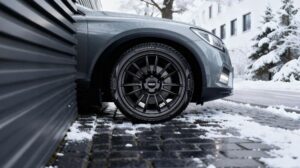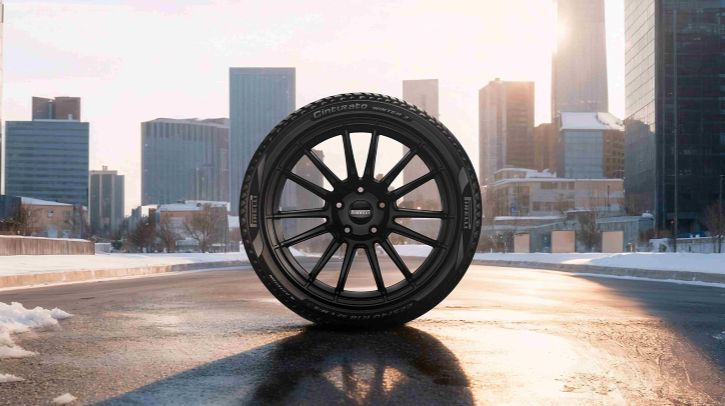Pirelli has launched the Cinturato Winter 3, a next-gen winter tire designed for sedans and crossovers and the first product from the tire maker to be developed using the new indoor facility at the Pirelli Sottozero Centre in Swedish Lapland.
The tire’s snow performance was tested by independent bodies Dekra and TÜV, which ranked it first on snow for braking, traction and handling, and awarded it the TÜV Premium Quality Mark. The tire was also stated to have excellent wet performance – it received A-B classification on the European label for wet grip across the entire range.
The tire also boasts acoustic comfort with low rolling noise emissions, confirmed by the B Class rating on the EU noise label, while the tread pattern has been designed for lasting performance and higher mileage compared to the previous generation.
Development
The tire was developed using virtual and simulation techniques. These methods helped balance traditionally conflicting features, such as mileage and aquaplaning resistance — both of which improved compared with previous models. Virtual development reduced the use of physical prototypes, delivering more accurate results while minimizing development times.
The main update is seen in the tread pattern. A central zig-zag channel improves water evacuation, while optimized sipes and Snow Keeper Teeth on the tread blocks trap snow for better snow-on-snow grip, without compromizing wet performance.

The compound draws on the P Zero Winter 2, a high-performance winter tire that has won multiple comparison tests. The Cinturato Winter 3 uses a dual-core polymer with a dual-mode structure that increases grip in different conditions — offering high mobility at low temperatures – and provides snow adhesion without compromising grip on wet or dry surfaces. The compound also delivers strong wear resistance, extending the tire’s overall performance range.
Development also used the virtual compounder, a tool developed by Pirelli that uses generative AI to accelerate the identification of the best material combinations for new compounds, enabling more precise results and maximizing process efficiency.
Tested in summer
While the use of virtual methods has been expanded, physical testing activities have also evolved with new methods and facilities to experiment at different times of the year. In addition to the testing laboratories in Bicocca, the Pirelli Sottozero Centre also played a key role in the development of the new tire. The center, located in Swedish Lapland, conducted R&D department tests on tires on different surfaces, from snow to ice, all year round.
The Cinturato Winter 3 was the first tire to benefit from the center’s most recent indoor facility, which enables replication of winter temperatures, conditions and surfaces even in summer. To ensure maximum effectiveness on specific vehicles, between physical and virtual tests, the tire was tested on over 10 of the most representative car models on the market.
In related news, Nexen Tire selected as OE supplier for Kia EV5


